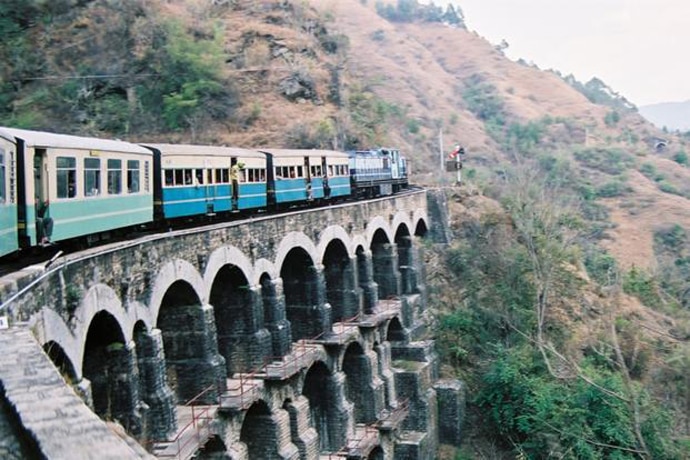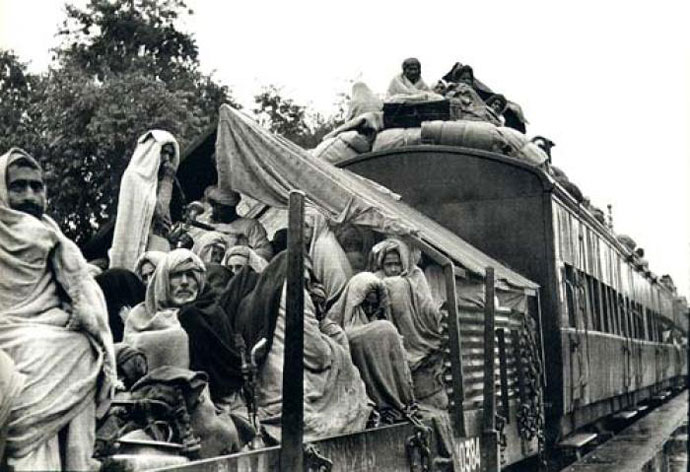How Gandhi, a judge and a right to lavatory changed the Indian Railways

“You cannot maintain,” wrote Karl Marx, in 1853, “a net of railways over an immense country without introducing all those industrial processes necessary to meet the immediate and current wants of railway locomotion.”
He was referring to the newly-built Great Indian Railways. It had had its first run, in a passenger train, from Bombay to Thane, a little over three months before Marx’s article was published in the New York Daily Tribune (July 22).
Marx’s prophecy was that the railway industry might go on to facilitate “the application of machinery to those branches of industry not immediately connected with railways.”
The following decades saw the emergence of industries such as those of iron and steel, tea, newspapers, literature, and many others.
Nonetheless, the longest running industry that grew out of the railways was that of its representations and legends — one that an economist like Marx could not have otherwise imagined.
The Indian Railways, which began as a non-egalitarian enterprise, with sharp distinctions between European and Indian passengers, also underwent a series of parallax shifts.

In 19th century India, iron ore, tea, timber, war ammunition, opium, indigo, cotton and jute became goods of exploitation or traffic in the railways.
Meanwhile, the railways directly led to famines, in the 1870s and 1880s. However, the Indian Railways underwent an ideological sea-change in the way the Indians used it, by the first decade of the 20th century.
If not in practice, as a narrative performance!
Thus spake the native: ‘Your coat has gone to fetch my slippers’
In The Discovery of India, Jawaharlal Nehru wrote: “[i]n India every European, be he German, or Pole, or Rumanian, is automatically a member of the ruling race. Railway carriages, station retiring-rooms, benches in parks, etc., are marked ‘For Europeans Only.’”
It was one thing for Mahatma Gandhi to experience apartheid as an Indian in colonial South Africa, in the incident when he was thrown out of a first-class carriage. It was quite another to face the same in India, itself.
Although the incident with Gandhi at Pietermaritzburg stood out, there were numerous such stories of racial humiliation in India. Gandhi used that incident to strategise a movement of epic proportions.
He made the third-class compartment his political tool, much like his dhoti. He transformed the Indian railway platforms into theatres of nationalism, where he gave speeches, attended meetings, and even collected donations from Indians.
Gandhi had no qualms about openly seeking money from the attendees. "People coming to station platforms," he said, "should bring money with them… If the collections do not reach the one-crore-rupee mark before June 30 (1921), we shall be disgraced and I shall definitely say then that we cannot win swaraj this year."
A very popular legend came about when an attempt was made to humiliate Ashutosh Mukherjee, the first Indian chief justice at the Calcutta High Court. Mukherjee boarded a first-class carriage in which a British passenger, a jute plantation owner, had the upper berth.
The latter did not want to share his compartment with an Indian, and at the first opportunity when Mukherjee was asleep, he threw his sandals out of the moving train.
On waking up and realising what had happened, Mukherjee took the man’s jacket from the dowel and threw it into the wind. The next morning, while searching for his jacket, the Briton was told “[y]our coat has gone to fetch my slippers”.
The man who ate a jackfruit too many: first lavatories in third-class carriages
The incident involving Mukherjee happened sometime in the early 20th century. It was legends such as these — in the light of the larger nationalist movement — that became emblematic of India’s railway history.
Back in the 19th century, Indians were relegated to spectators or bystanders, often confounding the juggernaut of the British Indian Railways to be some alien deity. Villagers and their children even bowed before the trains, fearing them as they feared their gods and religion.

However, by 1920s, Indians refused to be intimated by the tyrannical structure of the railways and its many Indo-Saracenic or Gothic monuments — those railway stations of Bombay, Howrah or Madras that inevitably sought to inspire awe in the natives.
A new traffic of hybridity emerged in the railways. Some documents dating from the time record how Indians used the amalgamation of the English language and the British Indian Railways to their own benefit.
One of them is a letter written by Okhil Chandra Sen to the divisional railway office at Sahibganj, in 1909.
It is supposed that this letter led to the building of lavatories in the Indian sections of the Indian Railways — the second — and the third-classes. Okhil babu’s writing does seem to be a very credible voice over for the otherwise silent railcars.
"[Sic] I am arrive by passenger train Ahmedpur station and my belly is too much swelling with jackfruit. I am therefore went to privy. Just I doing the nuisance that guard making whistle blow for train to go off and I am running with lotah in one hand and dhoti in the next when I am fall over and expose all shocking to man and female women on platform. I am got leaved Ahmedpur station.
This too much bad, if passenger go to make dung that dam guard not wait train minutes for him. I am there for pray your honour to make big fine on that guard for public sake. Otherwise I am making big report to papers."
Okhil babu makes no bones about his fascination with English language and English manners. At the same time he signs his letter as “humble servant”, in the manner of Gandhi.
Reclaiming India’s Railways
It is telling how Mukherjee, Okhil Babu, Gandhi assume centre stage around the same time. Gandhi’s Hind Swaraj (or Indian Home Rule) of 1909, operates as a scathing criticism of the railways, and several other British institutions in India. Exactly around the same time began a series of attempted bomb explosions in the East India Railway and the Great Peninsular Railways zones.
By 1916, Gandhi was off to Champaran, and by 1920 he had toured considerable lengths of the country in third-class carriages. By 1930s, “Mahatma Gandhi ki jai (long live Mahatma Gandhi)” had become a slogan synonymous with railway chain-pulling and other disruptive activities by the nationalists.
In one generation the dream of civilisation that the railways were meant to execute for the Empire had transformed into an anti-colonial nightmare, often scripted in the English language and the first-class compartments. With the exception of Gandhi, only few nationalists travelled third-class. Nehru and Jinnah being prime examples of those who used elite English manners to subvert the Raj.
Back in the 19th century, the Indian Railways had been a narrative tool at the hands of imperial writers, such as Rudyard Kipling, Jules Verne, or Mark Twain.
In their narratives the Indian railways were written of in discourses of aristocracy — varnished and upholstered compartments that were mobile homes, installed with colonial comforts of furniture, culinary delights and beverages. They strove to create “a nominal provincial Europe” on wheels.

Marx believed that like “geological revolutions” shaped the surface of the planet, social revolutions would return the industries and forces of production into the hands of the common producers.
In the course of the railways, Gandhi took that lead during the nationalist movement in India. However, the common producers of that great industry of the legends and representations of the Indian Railways, were characters like Mukherjee and Okhil babu.
They did more than reclaim the railways — they rewrote the language of the “fire carriages”.
In the words of one Sir T Madhava Rao, “If India is to become a homogeneous nation it must be by means of the Railways [and]... the English language”.
Mukherjee, Okhil babu and Gandhi ensured that this was not to be.
Rao’s myopic vision was thwarted ever so dramatically.
The Indian Railways are a living testimony to the great heterogeneity of the nation — that nationalist politics chose to anoint with protests, sedition, armed struggle, and the bloodbath of the Partition — in many a song and tragedy, many a romance or departure, many a clattering journey or an unsung arrival.

